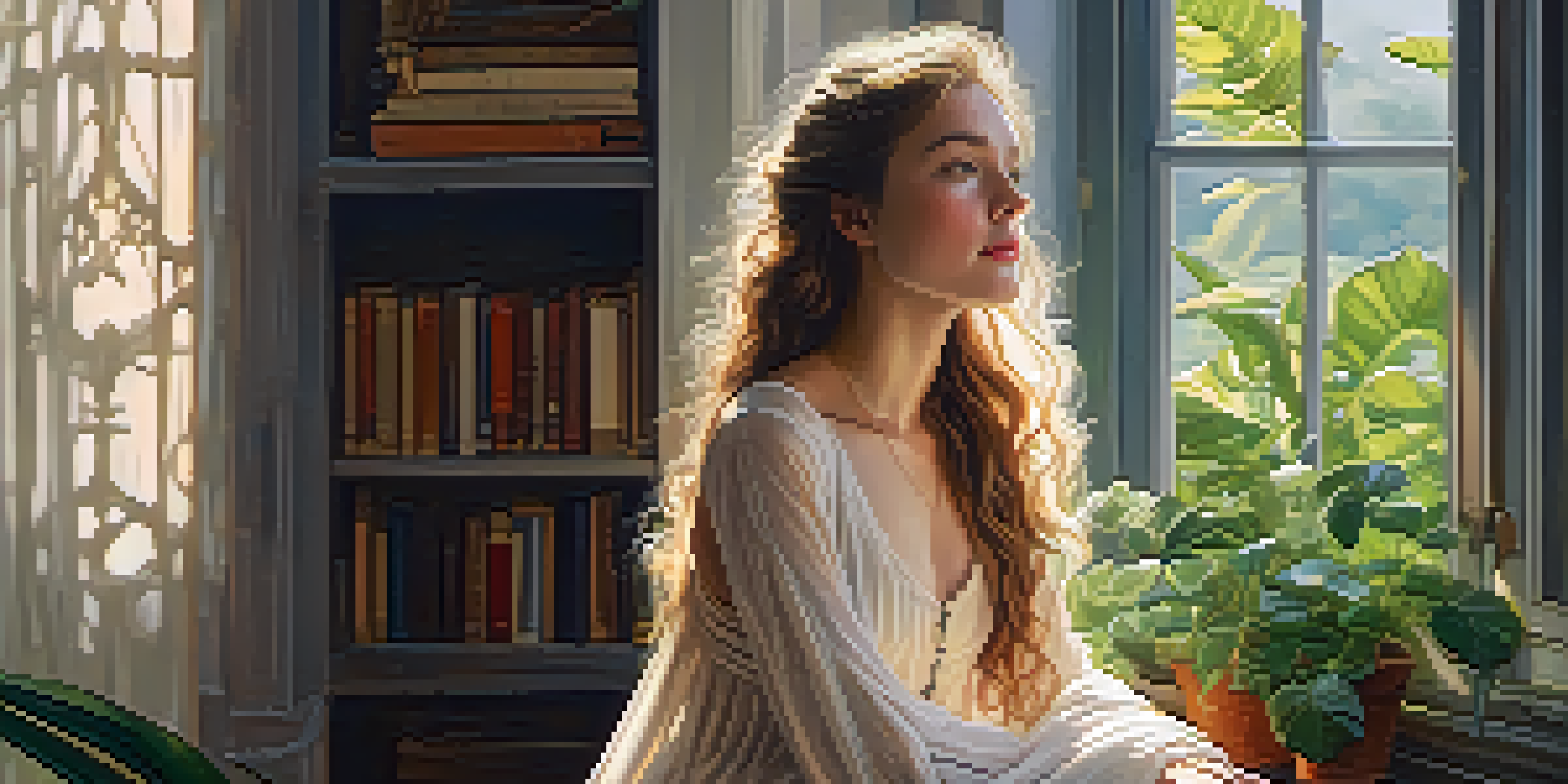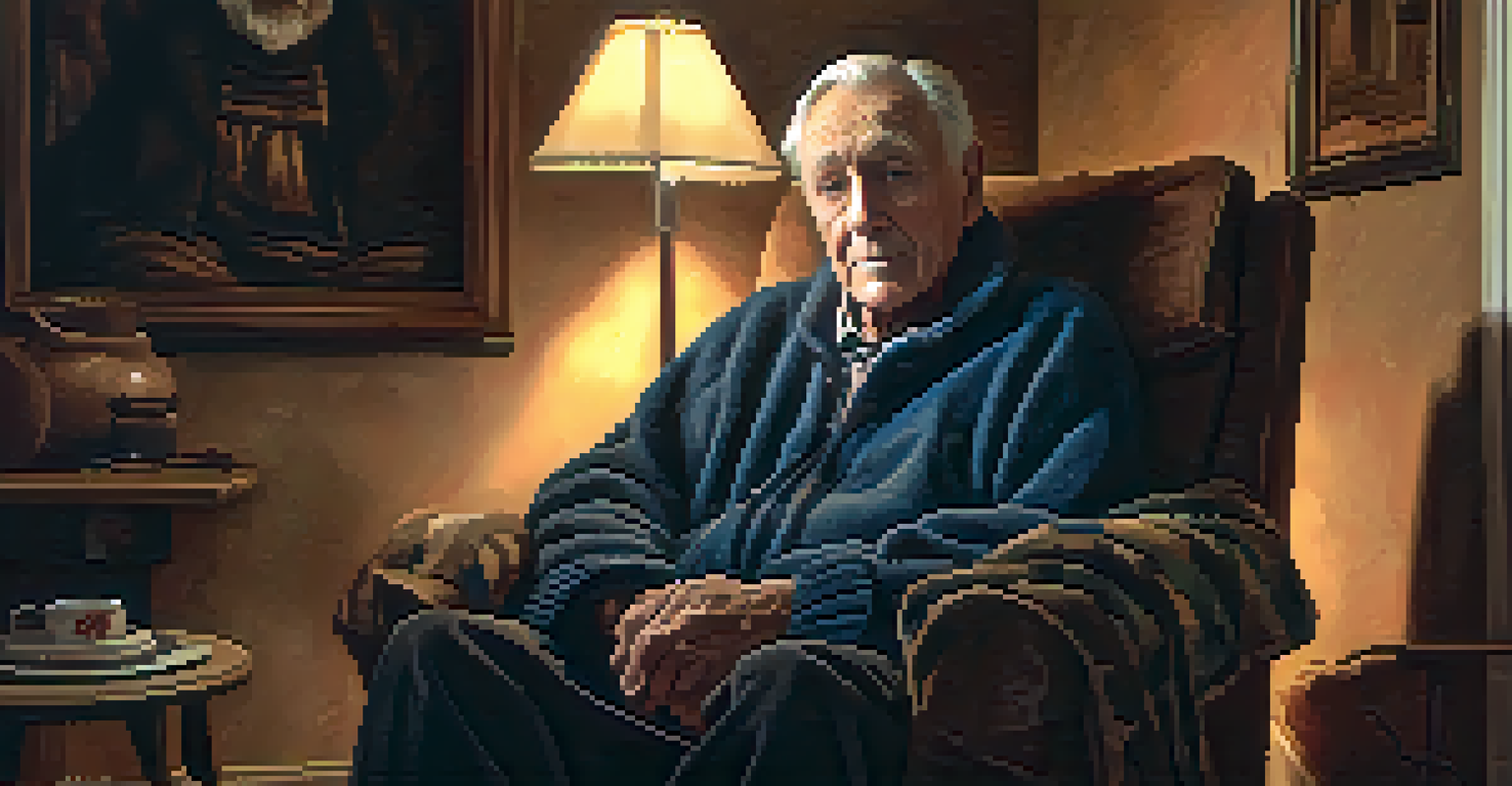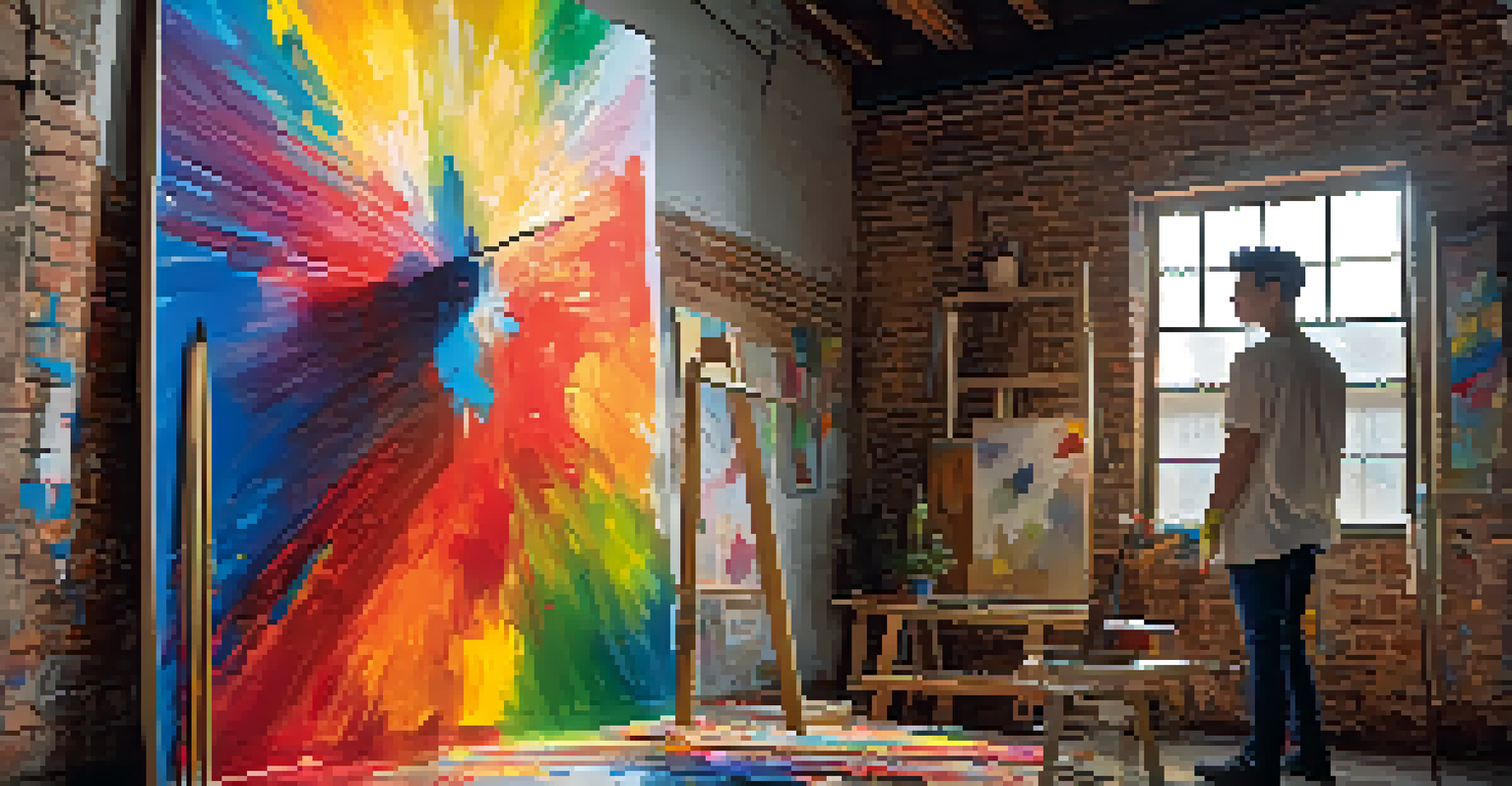Romanticism in Portrait Painting: Emotion and Individualism

Understanding Romanticism in Art and Portraiture
Romanticism emerged in the late 18th century as a reaction to the Enlightenment's emphasis on reason. It celebrated emotion, nature, and the individual, which profoundly influenced portrait painting. Artists sought to capture not just the likeness of their subjects, but also their inner feelings and unique personalities.
Art is the most beautiful of all lies.
This movement shifted the focus from classical ideals to a more personal and emotional representation. Portraits became a medium to express the complexities of human experience. The goal was to evoke empathy and connection, allowing viewers to see not just a face, but the soul behind it.
As Romanticism spread across Europe, it inspired a diverse range of styles and themes. Artists like Eugène Delacroix and Francisco Goya pushed the boundaries, creating emotionally charged works that resonated with the public. This evolution marked a significant departure from the more rigid and formal conventions of earlier art forms.
Key Characteristics of Romantic Portraits
Romantic portrait painting is characterized by its emphasis on emotion and individualism. Unlike previous styles, which often prioritized idealization, Romantic artists embraced imperfection and authenticity. This approach allowed them to capture the true essence of their subjects, revealing their vulnerabilities and passions.

The use of color and light also played a crucial role in conveying emotion. Artists often employed dramatic contrasts to highlight feelings, using shadow and illumination to create depth. This technique not only added visual interest but also enhanced the emotional weight of the portraits.
Romanticism Emphasizes Emotion
Romantic portrait painting focuses on capturing deep emotions and individual experiences rather than idealized representations.
Additionally, Romantic portraiture often included symbolic elements, providing deeper insights into the subject's character. For example, a subject might be depicted with a book to symbolize knowledge or with nature to reflect their connection to the earth. These layers of meaning invite viewers to engage more deeply with the artwork.
The Role of Emotion in Romantic Portraits
Emotion is at the heart of Romantic portrait painting, transforming the genre into a powerful form of expression. Artists sought to evoke feelings such as joy, melancholy, or longing, creating a visceral experience for the viewer. This emotional depth allows audiences to connect with the subjects on a personal level.
The painter tries to master the art of capturing the fleeting moment, the essence of what it means to be human.
For instance, think of a portrait that captures a moment of quiet contemplation. The subject's expression, combined with the artist's skillful use of color and texture, can stir feelings of nostalgia or empathy. This ability to evoke emotion is what sets Romantic portraits apart from their predecessors.
Moreover, the portrayal of raw emotion also reflects the broader societal changes of the time. As people began to value individual experience and personal expression, artists responded by creating works that echoed these sentiments. This shift not only enriched the art world but also encouraged a new understanding of human experience.
Individualism in Romantic Portrait Painting
Individualism is a cornerstone of Romanticism, allowing artists to explore the uniqueness of each subject. In contrast to the collective ideals of previous movements, Romantic portraiture celebrates personal identity and self-expression. This focus on the individual often resulted in more intimate and relatable representations.
Take, for example, the works of portrait artists like John Constable, who painted not only landscapes but also portraits that reflected the character of his subjects. His attention to detail and personal connection with his subjects allowed him to showcase their individuality, making each portrait a unique story.
Individualism Shapes Portraits
The movement celebrates personal identity, allowing artists to create intimate and relatable portrayals of their subjects.
In essence, Romantic portrait painting invites us to appreciate the complexity of human nature. By highlighting individual traits and emotions, these artworks foster a deeper understanding of ourselves and others. The individual becomes not just a subject, but a narrative, rich with history and feeling.
Influential Romantic Portrait Artists
Several artists played pivotal roles in shaping Romantic portrait painting, each bringing their unique flair to the genre. One notable figure is Eugène Delacroix, whose dynamic compositions and vivid use of color captured the intensity of human emotion. His portraits often conveyed a sense of drama, drawing viewers into the emotional landscape of his subjects.
Another key artist is Caspar David Friedrich, known for his moody landscapes and introspective figures. His portraits often reflect a connection to nature and a deep sense of melancholy, inviting viewers to ponder the human experience in relation to the natural world. Friedrich's works exemplify the Romantic ideal of finding beauty and meaning in solitude.
Lastly, Francisco Goya's portraits are notable for their psychological depth and social commentary. His ability to convey the complexities of human emotion, often tinged with darkness, set a precedent for later artists. Goya's works serve as powerful reminders of the emotional struggles and individual experiences that define the human condition.
The Legacy of Romanticism in Portrait Painting
The legacy of Romanticism continues to influence portrait painting today, as artists strive to capture the emotional essence of their subjects. This movement laid the groundwork for future artistic explorations of identity and feeling, inspiring generations of painters to prioritize personal expression. Even in modern art, the impact of Romantic ideals can be seen in the emphasis on individuality and emotional depth.
Moreover, the Romantic approach to portraiture encourages viewers to engage with art on a more personal level. By fostering a connection between the subject and the observer, these portraits create a dialogue that transcends time and culture. This enduring relevance speaks to the universal nature of human emotion and experience.
Legacy Influences Modern Art
The ideals of Romanticism continue to inspire contemporary artists to prioritize emotional depth and personal expression in their work.
As we reflect on the achievements of Romantic portrait painting, we recognize its powerful role in shaping our understanding of individuality. The movement's celebration of emotion and personal expression continues to resonate, reminding us that every face tells a story worth exploring.
Conclusion: Emotion and Individualism in Art
In conclusion, Romanticism in portrait painting represents a significant shift in the art world, emphasizing emotion and individuality. By moving away from idealized representations, artists began to explore the complexities of human experience, inviting viewers to connect with their subjects on a deeper level. This focus on emotion allows for a richer understanding of both art and the human condition.
The legacy of Romantic portraiture is evident in today's art, where the exploration of individual identity remains a central theme. Artists continue to draw inspiration from the Romantic ideals of authenticity and emotional depth, creating works that resonate with contemporary audiences. In a world where personal expression is highly valued, the influence of Romanticism endures.

Ultimately, the beauty of Romantic portrait painting lies in its ability to capture the essence of the individual. Through emotion and personal storytelling, these portraits remind us of the richness of our shared human experience, encouraging us to appreciate the stories behind each face we encounter.